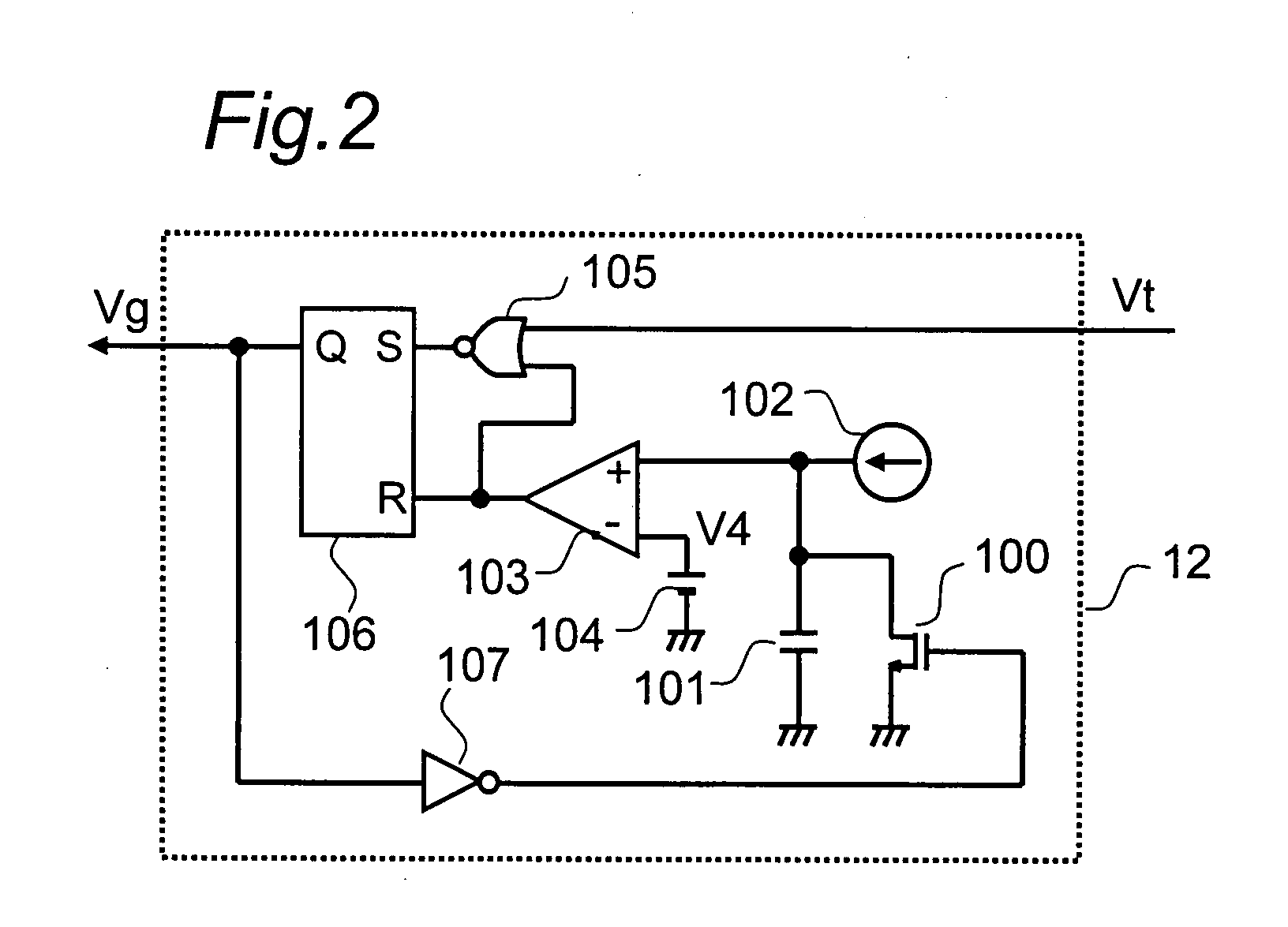Step-up converter
- Summary
- Abstract
- Description
- Claims
- Application Information
AI Technical Summary
Benefits of technology
Problems solved by technology
Method used
Image
Examples
first embodiment
[0037]The step-up converter according to a first embodiment of the present invention will be described below referring to the drawings. FIG. 1A is a circuit diagram showing the step-up converter according to the first embodiment of the present invention, and FIG. 1B is a graph showing the waveforms of the operation thereof.
[0038]Referring to FIG. 1A, numeral 1 designates an input DC power supply, such as a battery, for supplying an input DC voltage Vi. Numeral 2 designates an inductor, one terminal of which is connected to the input DC power supply 1. It is assumed that the inductance of the inductor 2 is L. Numeral 3 designates a main switch that is connected to the other terminal of the inductor 2 and is turned ON / OFF using a drive signal Vg. Numeral 4 designates a rectifier, one terminal of which is connected to the connection point of the inductor 2 and the main switch 3. Numeral 5 designates an output capacitor serving as a smoothing means that is connected to the other termina...
second embodiment
[0051]FIG. 3A is a circuit diagram showing the timer circuit 12a of a step-up converter according to a second embodiment of the present invention. The timer circuit 12a according to the second embodiment can set the minimum OFF time in addition to the ON time setting function of the timer circuit 12 according to the first embodiment described above. Since the configuration of the step-up converter according to the second embodiment is similar to the configuration of the step-up converter according to the first embodiment described above except for the timer circuit 12a, in FIG. 3A, the input DC power supply 1, the inductor 2, the main switch 3, the rectifier 4, the smoothing means 5, the load 6, the reference voltage supply 7, the error amplifier 8 and the current detector 9 shown in FIG. 1A are not shown. In addition, the comparator 11 of the constant current 10 is not shown either since its configuration is similar to that according to the first embodiment. In the timer circuit 12...
third embodiment
[0060]FIG. 4A is a circuit diagram showing the timer circuit 12b of a step-up converter according to a third embodiment of the present invention, wherein the ON time can be corrected using input / output DC voltages in addition to the function of the timer circuit 12a according to the second embodiment described above. Referring to FIG. 4A, the same components as those of the timer circuit 12a of the step-up converter according to the second embodiment shown in FIG. 3A are designated by the same numerals, and their descriptions are omitted. The timer circuit 12b of the step-up converter according to the third embodiment differs from the timer circuit 12a shown in FIG. 3A in the configurations of the current supply circuit 102b and the voltage supply circuit 104b thereof. The circuit configuration of the current supply circuit 102b is shown in FIG. 4B, and the circuit configuration of the voltage supply circuit 104b is shown in FIG. 4C.
[0061]Referring to FIG. 4B, the current supply cir...
PUM
 Login to View More
Login to View More Abstract
Description
Claims
Application Information
 Login to View More
Login to View More - R&D
- Intellectual Property
- Life Sciences
- Materials
- Tech Scout
- Unparalleled Data Quality
- Higher Quality Content
- 60% Fewer Hallucinations
Browse by: Latest US Patents, China's latest patents, Technical Efficacy Thesaurus, Application Domain, Technology Topic, Popular Technical Reports.
© 2025 PatSnap. All rights reserved.Legal|Privacy policy|Modern Slavery Act Transparency Statement|Sitemap|About US| Contact US: help@patsnap.com



